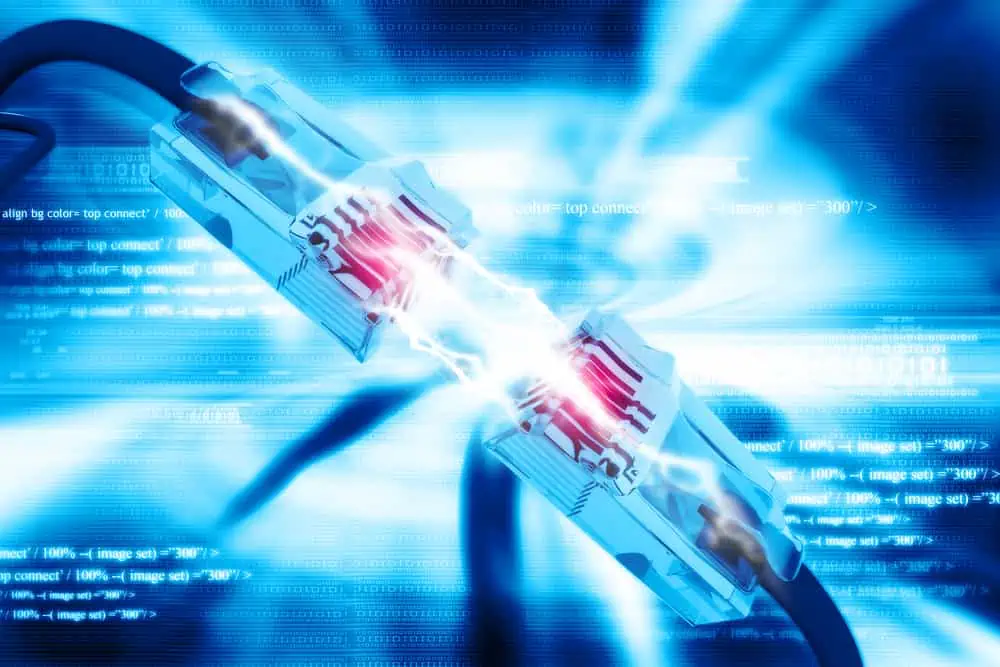Have you ever wondered how some Wi-Fi networks manage to stay completely under the radar? The answer lies in a concept known as the “Hidden Network” and this article explains what it’s all about.
Overview
A hidden network is a Wi-Fi network that doesn’t broadcast its SSID, making it less visible to nearby devices. Often referred to as a “hidden SSID” (Service Set Identifier), this network makes its presence and network ID invisible.
The concept of hidden SSID emerged with the development of Wi-Fi technology in the late 20th century. The 802.11 standard, which is the foundation of modern Wi-Fi, was initially introduced in the late 1990s.
At this stage, Wi-Fi networks typically broadcast their SSIDs openly, making them visible to all nearby devices. However, as Wi-Fi technology gained popularity and became more prevalent, security concerns emerged.
Network administrators recognized that the open broadcast of SSIDs allowed unauthorized users to easily identify and connect to networks. This prompted the exploration of methods to enhance network security, such as a hidden SSID.
Nonetheless, Wi-Fi technology continued to evolve, and security measures became more sophisticated. Encryption protocols like WPA (Wi-Fi Protected Access) and WPA2 were introduced to provide strong data security for Wi-Fi networks.
These advancements diminished the reliance on hidden networks as the primary security measure. Regardless, today, hidden networks remain a feature in many Wi-Fi routers and access points.
Characteristics of a Hidden Network
Non-Broadcast SSID
Apparently, one of the major features of a hidden network is that it doesn’t broadcast its SSID. The SSID, also known as network ID, is essentially the name that identifies the network to Wi-Fi devices.
This means that when devices scan for available Wi-Fi networks, the hidden network’s name won’t appear. This non-broadcast feature is intended to enhance network security by keeping the network out of plain sight.
Manual Configuration
To connect to a hidden network, users need to manually enter the network’s SSID and security credentials. This process can be less user-friendly than connecting to visible networks.
With visible networks, devices automatically display available options, and users can simply select the desired network and enter a password. For a hidden network, users must first know the SSID and the security credentials in advance.
Then, they have to input manually through their device’s Wi-Fi settings. This manual configuration can be a bit cumbersome and is often the trade-off for increased network security.
Enhanced Security Through Obscurity
The primary motivation for using a hidden SSID is to enhance security through obscurity. By not broadcasting the SSID, network administrators hope to reduce the likelihood of unauthorized users finding the network.
However, it’s important to note that this is just one layer of security. It’s not a replacement for robust encryption and other security measures.
Hackers can still discover hidden networks. Hence, relying solely on a hidden SSID as a security measure is not advisable.
Experienced cyberattackers can still discover the hidden SSID using various techniques. However, a hidden network does add a layer of complexity for casual users.
Supported by Most Wi-Fi Devices
Hidden SSIDs are supported by most Wi-Fi devices, including smartphones, laptops, tablets, and various other devices. Furthermore, they have become a standard feature in the configuration settings of Wi-Fi routers and access points.
This means that network administrators can easily enable the hidden network option when setting up their wireless infrastructure. This broad compatibility makes hidden SSIDs a practical choice for a diverse range of applications.
Advantages of a Hidden Network
Limited Discoverability
Hidden networks are less likely to appear in the list of available networks when devices scan for Wi-Fi connections.
This reduced discoverability means that the network is less likely to be noticed by nearby users. This can be useful in situations where you want to prevent others from seeing and attempting to connect to your network.
It’s especially valuable for networks in crowded or public places, where reducing visibility helps maintain control.
Protection Against Wardriving
Hidden networks make it more challenging for wardrivers to identify and target the network.
Wardriving refers to the activity of individuals who roam around looking for open Wi-Fi networks to exploit. While hidden SSIDs are not invulnerable to advanced attackers, they act as a deterrent by requiring more effort to discover.
This reduces the chances of being targeted by opportunistic individuals.
Reduced Network Congestion
Hidden networks may experience reduced network congestion because they are less likely to be discovered.
Also, they are less likely to be connected to by unauthorized users. Since the network is not visible to all nearby devices, it’s less likely to attract a large number of connections.
This can lead to improved network performance for legitimate users.
Improved Device Control
Device management becomes more controlled in a hidden network environment.
Administrators must manually configure each device with the SSID and security information. This manual process significantly reduces the chances of rogue or unauthorized devices connecting to the network.
It’s especially valuable in situations where strict access control is essential.
Customized User Experience
Hidden networks allow network administrators to provide a more tailored and controlled experience for authorized users.
This is valuable in guest network setups or corporate environments with multiple user types. Network administrators can apply different access rules, bandwidth limitations, or security measures, ensuring a customized and controlled user experience.
Disadvantages of a Hidden SSID
Complex Device Configuration
Configuring devices to connect to a hidden network can be complex and less user-friendly compared to visible networks.
Users must manually enter the network’s SSID and security credentials. In larger network environments, such as businesses or schools, this process can be time-consuming and error-prone.
It places a burden on both users and administrators, potentially leading to support requests and troubleshooting.
Limited Security Benefit
Hiding the SSID offers only limited security benefits.
While it can deter casual or opportunistic access attempts, it is not a robust security measure. Experienced hackers can still discover hidden networks using techniques like network probing, de-authentication attacks, or using Wi-Fi sniffer tools.
Therefore, you shouldn’t rely on it as the sole security measure for a network.
Difficulty for Guests and Temporary Users
Hidden SSIDs can be particularly inconvenient for guests or temporary users.
These individuals may only need to access the network briefly. So, requiring them to enter the SSID and security credentials manually can be time-consuming and cumbersome.
This inconvenience can lead to a less positive experience for guests. It may also deter them from using the network or returning to the same location in the future.
Increased Risk of Typos
Manually entering the SSID and security information on devices introduces a higher risk of typographical errors.
A small mistake in the SSID or a security key can lead to connection failures. Users might become frustrated when they encounter connection problems and may need to recheck and reenter the information.
Such errors can lead to a negative user experience and possibly result in technical support requests.
Potential for Forgetfulness
Users may forget the SSID and security credentials for hidden networks, particularly if they do not connect to the network frequently.
This forgetfulness can lead to inconvenience and additional administrative overhead. Users may need to contact network administrators for the forgotten information.
This introduces additional steps and potential delays in network access.
Frequently Asked Questions
Connecting to a hidden network can be safe. However, it depends on how the network is configured and the security measures in place.
The most important factor for network safety is encryption. Hence, ensure that the hidden network uses strong encryption protocols such as WPA2 or WPA3.
Encryption secures the data transmitted between your device and the network, protecting it from eavesdropping and interception.
Yes, you can make a hidden network visible again by adjusting the router’s settings to broadcast the SSID. This change will make the network appear in the list of available networks on nearby devices.
Hidden networks can be less convenient for public access points because users must know the SSID in advance. In public settings, it is better to use visible networks for ease of use.
Hidden networks are typically more suited for private or controlled environments where network privacy is a priority.
Yes, you can hide your home Wi-Fi network by configuring your router or access point not to broadcast its SSID. You can do that in the router’s settings.
Hidden networks offer a degree of security through obscurity, but they are not inherently more secure. Strong encryption and robust security practices are essential for network security
Conclusion
A hidden network is a type of Wi-Fi network that does not broadcast its Service Set Identifier (SSID). The primary purpose of hiding the SSID is to make the network less visible to nearby devices, adding an extra layer of privacy.
Hence, when users search for available Wi-Fi networks, hidden networks do not appear in the list of discoverable networks. This makes them less accessible to casual users and passersby.
While these types of networks provide a level of obscurity, it’s important to understand that their security benefits are limited. To ensure the safety of a hidden network, it must be coupled with other security practices, such as strong encryption.
Furthermore, it’s worth noting that skilled hackers can still discover hidden networks using various techniques.
We hope that the information presented in this article has been both enlightening and valuable to you. If you have found this content beneficial, we invite you to share your insights with us using the comments form (“Leave a Reply”) at the bottom of this page.
You could also use the “Was this page helpful?” buttons below to give us your feedback.
Lastly, we encourage you to explore our Technology Explained page, where you can access a wealth of related articles.



